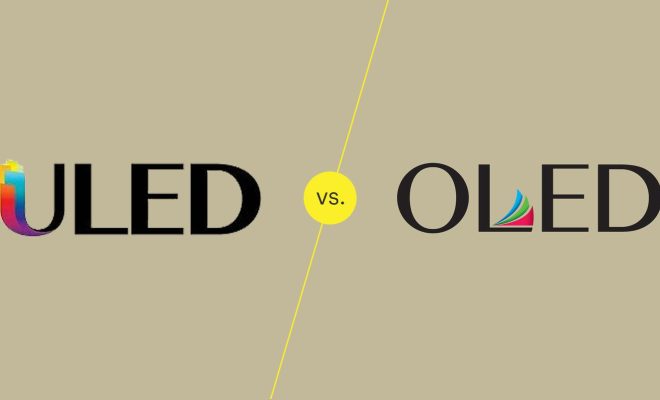ULED vs OLED: What You Need to Know

In the world of TVs, there are two types that are currently leading the pack in terms of picture quality – OLED and ULED. But what exactly are these two technologies and how do they differ? Here’s what you need to know.
What is OLED?
OLED stands for Organic Light Emitting Diode. The name itself refers to the organic material used in OLEDs, which illuminates when an electric current is passed through it. Unlike traditional LED/LCD TVs, each pixel in an OLED TV is responsible for producing its own light. This means that when a certain pixel needs to be turned off to produce black, it is completely turned off, resulting in true blacks and an infinite contrast ratio. OLEDs also boast wide viewing angles, which means the picture remains clear and crisp even when viewed from an angle.
What is ULED?
ULED stands for Ultra LED. This technology was developed by Hisense, a Chinese electronics company. It is essentially an LED/LCD TV with some added tricks up its sleeve. ULED TVs feature dimming zones, which allow for greater control over brightness and contrast. This technology works by dividing the screen into zones and controlling the brightness of each zone independently. ULED TVs also use a proprietary backlighting technology called “Hi-View” that selectively enhances colors and brightness.
How do they differ?
The most obvious difference between OLED and ULED is the way they produce their images. OLEDs use self-lighting pixels, while ULEDs use a backlighting system. This means that OLEDs can produce true blacks and an infinite contrast ratio, while ULEDs rely on backlighting to create contrast.
In terms of color accuracy, OLEDs are generally considered superior. Each pixel in an OLED TV can emit its own color, resulting in more accurate and realistic colors. However, ULEDs are no slouch either – they use a propriety technology that selectively enhances colors and brightness for a more vivid picture.
Price is another factor to consider. OLED TVs are generally more expensive than ULED TVs, with prices averaging around $1,500 for a 55-inch model. ULED TVs, on the other hand, are more affordable, with prices averaging around $700 for a 55-inch model.
Which one should you choose?
If you are looking for the best picture quality and don’t mind shelling out top dollar, then an OLED TV is the way to go. OLED’s self-lighting pixels and infinite contrast ratio result in a truly stunning picture. However, if you are on a budget or don’t need the absolute best picture quality, then a ULED TV is a great option. With its dimming zones and proprietary color technology, ULED TVs offer great performance and value for money. Ultimately, the choice between OLED and ULED depends on your budget and viewing preferences.






